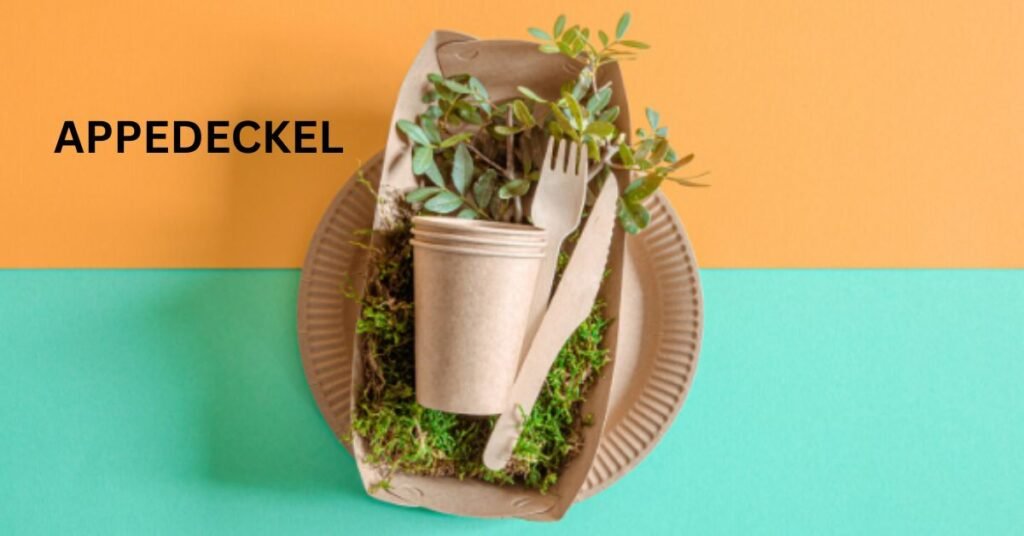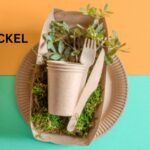Quick Answer / Key Takeaway
A pappedeckel is a cardboard lid or cover used in packaging—especially food and beverage settings—to replace plastic and promote sustainability. Its appeal lies in biodegradability, cost efficiency, and branding potential. While not without challenges (e.g. moisture resistance, supply-chain scale), it’s fast becoming a modest hero in the eco-packaging shift.
Introduction
In cafés across Berlin or small takeaway shops in Munich, you may already have touched a pappedeckel—a seemingly simple cardboard lid that conceals an ambitious mission. Rather than just another disposable accessory, pappedeckel are emerging as powerful symbols of sustainable packaging. Behind their modest form lies a story of environmental pressure, innovation, and cultural rethinking of “single-use.” In this article, we’ll trace how the pappedeckel works, why people care about it, its challenges, and its role in 2025’s packaging landscape.
Background / How Pappedeckel Works
The term pappedeckel comes from German, combining Pappe (cardboard) and Deckel (lid), meaning roughly “cardboard lid. In practice, a pappedeckel is a die-cut, shaped piece of paperboard or recycled fiberboard that fits over containers—think coffee cups, soup tubs, or food boxes.
Key functional components:
- Material & coatings: The base fiber is usually sourced from recycled or sustainably managed paper. To resist moisture (hot drinks, steam, light grease), manufacturers sometimes add biodegradable coatings or liners that are compostable or water-resistant.
- Die-cut precision: Efficient die-cutting allows the lid shape (round, square, etc.) to match container mouths precisely, ensuring a snug fit.
- Branding surface: Because pappedeckel is paper-based, it’s easy to print logos, instructions, QR codes, or design elements, turning the lid itself into a branding touchpoint.
- Stacking & supply: For shipping and storage, these lids are stacked flat; their low-profile form factor reduces bulk in supply chains.
Compared to plastic or polystyrene lids, pappedeckel aims to combine utility with eco-friendliness: the material is more easily composted or recycled and tends to have a lower carbon footprint in production.
Why People Search for Pappedeckel
Several converging trends fuel interest in pappedeckel:
- Plastic backlash
As governments restrict single-use plastics, businesses seek viable alternatives. Pappedeckel offers a drop-in substitute for lids and covers. - Consumer expectation / branding
Eco-conscious customers now expect packaging that matches ethical promises. A pappedeckel lets a brand “walk the talk” visually and functionally. - Cost vs. image balance
While paperboard lids may cost a bit more than commodity plastic, their marketing and environmental value often offset that premium. - Regulatory and waste infrastructure alignment
In places with strong recycling or composting systems (Germany, parts of Europe), pappedeckel’s biodegradable or recyclable nature meshes well with citizen expectations and local policy pressures. - Viral / cultural awareness
Articles, reports, and even local media features highlight pappedeckel as a “small but meaningful” greener switch for everyday packaging. That stimulates curiosity and search volume.
Thus, pappedeckel searches often come from businesses planning packaging shifts, sustainability advocates, or curious consumers encountering the term on a cup lid.
Is Pappedeckel Safe / Legal / Worth It?
Safety & food compliance
Because pappedeckel are used in direct food environments (hot drinks, soups, containers), they must comply with food-grade standards. This means:
- Material should avoid harmful adhesives, inks, or liners that leach.
- Coatings should be compostable or food-safe.
- Manufacturing must maintain sanitary processes.
In general, reputable producers provide pappedeckel with certifications or material safety declarations.
Legal / regulatory considerations
Pappedeckel typically falls under packaging regulations rather than controlled goods. However:
- If a lid is marketed as biodegradable, compostable, or eco-certified, regulations may require verification and labeling standards (to avoid “greenwashing”).
- In certain jurisdictions, bans on specific plastics pressure food service businesses to switch to alternatives like pappedeckel, making its use not just allowed but often encouraged.
Is it worth it?
Pros:
- Reduced plastic waste and environmental impact.
- Branding touchpoint and consumer goodwill.
- Alignment with sustainability regulations and policies.
- Lightweight logistics and stacking efficiency.
Cons:
- Cost per unit may be higher than polymer lids (depending on scale).
- Moisture, oil, or steam resistance is often weaker unless enhanced coatings are used, which can add cost or complexity.
- Not every container style or application is amenable to cardboard lids (e.g. heavy liquid handling, long shelf life).
In many markets, switching to pappedeckel is a worthy trade-off, particularly for premium, eco-sensitive, or brand-differentiated food businesses.
ALSO RAED: MyGreenBucks Kenneth Jones: A Deep Dive into the Man and the Mission
Major Updates or News About Pappedeckel
- Industry adoption growth: Over 2023–2025, small and medium cafés across Europe have increasingly replaced plastic lids with pappedeckel variants, partly spurred by plastic bans in countries like France or parts of Germany.
- Technological advances: New coatings and laminates that are compostable and moisture-resistant are being tested to improve utility without sacrificing biodegradability.
- Regulatory scrutiny: Consumer watchdogs in Europe have flagged packaging claims that overstate a lid’s compostability or recyclability if not backed by third-party certification.
- Patent activity: Several firms have filed patents around pappedeckel manufacturing methods, stacking designs, and composite layering to optimize performance.
- Research & lifecycle studies: Academics and independent labs are conducting comparative life cycle analyses (LCA) to quantify exactly how much carbon and waste reduction pappedeckel offers against plastics.
These developments suggest pappedeckel is not static tech—it’s evolving, refining, and under increasing public and regulatory focus.
The Bigger Impact of Pappedeckel in 2025
As of 2025, pappedeckel is more than a packaging footnote—it may help shape how waste and design thinking intersect:
- Standardization momentum: Businesses pushing for common diameters and stacking formats could help recycling infrastructure more efficiently sort and process cardboard lids.
- Circular economy models: In cities with composting or industrial organics flows, pappedeckel could fully close the loop as reusable packaging components.
- Consumer behavior signaling: The presence of pappedeckel on a coffee cup or takeaway box signals environmental intent, nudging consumer preferences and loyalty.
- Policy synergy: As governments tighten regulations on plastics (e.g. extended producer responsibility fees), pappedeckel adopters gain advantage by lowering regulatory risk.
- Innovation spillover: The techniques developed in pappedeckel design—improved coatings, material blends, die-cut geometry—can spill over into broader paper packaging (boxes, trays, etc.).
In short, by mid-2025, pappedeckel may be an influential testbed for how low-cost, high-volume sustainable packaging can scale.
Best Alternatives to Pappedeckel
For certain cases where pappedeckel is unsuitable, other options must be considered:
- Bagasse / sugarcane fiber lids: Biodegradable and stronger in moist environments; used in many eco-food packaging solutions.
- PLA (polylactic acid) lids: Compostable plastic derived from corn starch; good for some food sectors but requires industrial composting.
- Biopolymers / PHA: Emerging bio-based plastics that degrade in natural settings; promising but still in scaling phase.
- Silicone lids: Reusable, durable, and food-safe for certain containers (but not disposable).
- Metal or aluminum lids: Recyclable, sturdy, but heavier and less suited for everyday disposable packaging.
Each alternative carries trade-offs in cost, performance, and environmental footprint. In many real-world cases, hybrids (e.g. pappedeckel + moisture liner) or dual-layer systems are adopted to balance benefits.
Final Take
Pappedeckel may not make headlines, but its diffusion is quietly reshaping how we think about everyday packaging. As a low-cost, visually communicative, and ecologically meaningful alternative to plastic lids, pappedeckel offers real traction for brands, regulators, and consumers aligned with sustainability. That said, it’s not a universal fix—moisture durability, economies of scale, and functional limits remain challenges. In my assessment, pappedeckel holds strong potential for mainstream adoption in 2025 and beyond—but success depends on continual innovation and systems-level support.
FAQs
Q: What exactly is a pappedeckel?
A: It’s a cardboard or paperboard lid/cover used in packaging, commonly for food, drink, or takeout containers.
Q: How does pappedeckel compare to plastic lids?
A: It tends to have lower environmental impact (biodegradability, lower fossil input), but weaker moisture resistance unless coated.
Q: Are pappedeckel lids compostable?
A: Many are marketed as compostable, but actual compostability depends on material purity, coatings, and local composting infrastructure.
Q: Can I print branding on a pappedeckel?
A: Yes—printing, logos, QR codes, and design customization are among its advantages over plain plastic.
Q: Where is pappedeckel most widely used?
A: Europe (especially Germany, Austria), cafés, bakery shops, and eco-conscious food packaging segments.
Q: When should a business avoid pappedeckel?
A: In high-moisture, long-shelf-life, or heavy liquid applications where cardboard may fail; in those cases, hybrid or other material lids work better.







